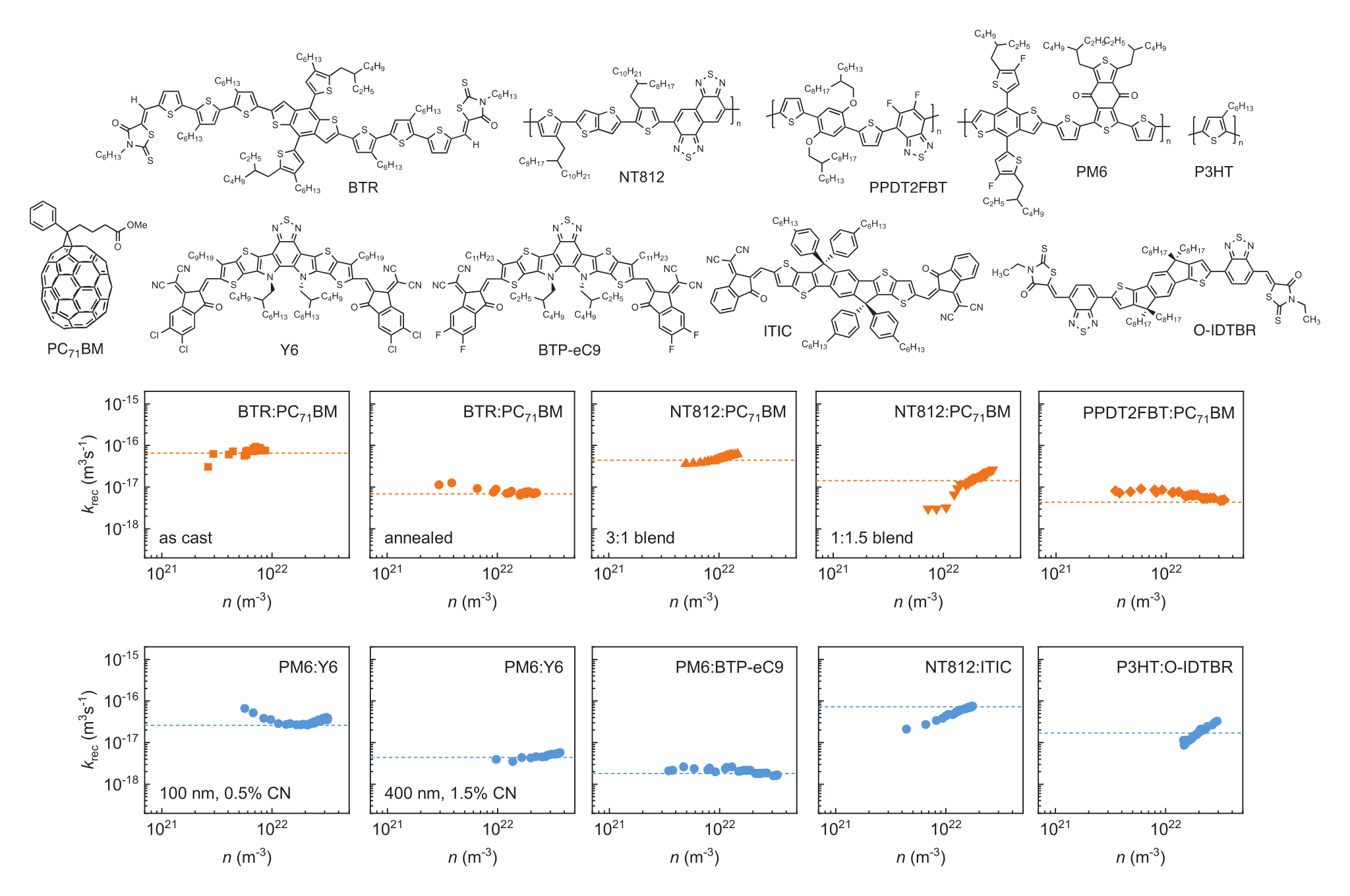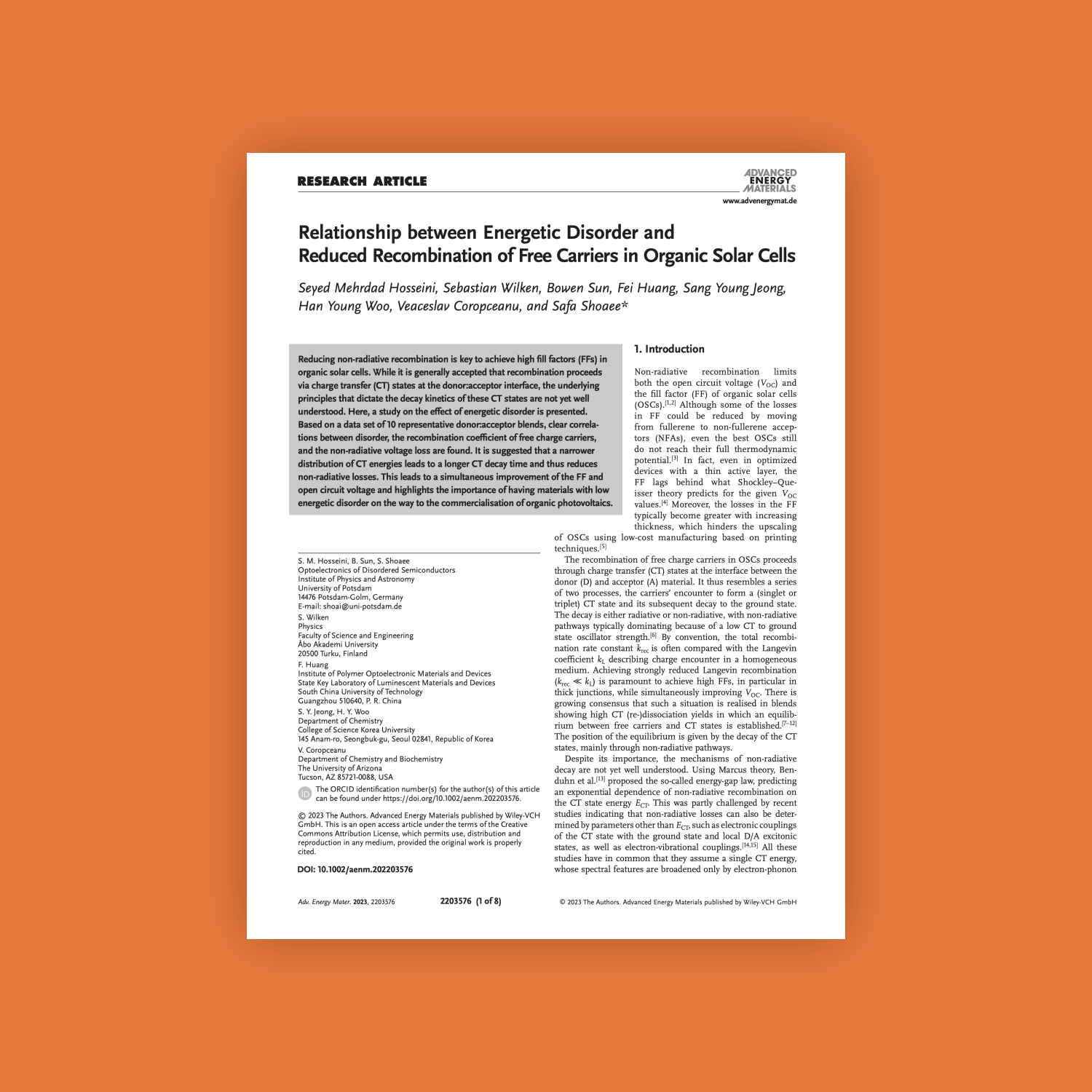I have a new paper out! 🥳
This one is a collaboration with Safa Shoaee from the University of Potsdam, Germany. Safa and I met at a conference a few years ago. We found out that we’re both interested in charge recombination in organic solar cells and why it varies so much for different material systems.
Now we found an occasion to work together on the issue. We took a closer look at the role of energetic disorder and how it impacts the recombination dynamics. From a broad material study, we could derive some interesting trends. We found that disorder is a key driver of recombination and that reducing it should thus be central in material design.
The paper is published open access in Advanced Energy Materials, one of the top journals in our field.

The Story
Unlike their inorganic relatives, organic semiconductors do not feature continuous energy bands with defined band edges but a distribution of discrete energy states. The reason is that organic matter consists of molecules that are subject to random alterations in orientation and structure, which translate into energetic variations. This is called energetic disorder and I wrote about one consequence of it here.
To describe energetic disorder, usually a Gaussian density of states with a width σ is assumed. Determining σ, that is, finding out how disordered a sample is, is tricky. Our method was to study the charge transport as a function of temperature. Using analytical models, in our case the Gaussian disorder model, one can then approximate the width of the density of states that charge carriers experience while moving in the organic material through hopping from state to state.
In the study, we did this for a total of ten different active layer blends, including conventional fullerene and some of the latest non-fullerene acceptors.
Comparing the disorder with recombination data from charge extraction and luminescence experiments revealed some interesting correlations. We found that σ determines both the recombination strength and the non-radiative voltage loss, with less disorder being beneficial for device performance.
We argue that the disorder controls the decay time of the charge transfer state formed when an electron and a hole meet, an important intermediate step in charge recombination. This shows that minimizing energetic disorder is key to reduce recombination losses in organic solar cells.

My main task in the project was to analyze the transport measurements and determine the disorder parameter σ. I worked mainly with some automatic fitting routines and drift-diffusion simulations using an open-source software tool I got involved with during my stay at Linköping University. I also helped with the writing and designed the figures.
It was quite a long way to understand the data and get the paper published, but we’re very happy with the result.
Reference
Seyed M. Hosseini, Sebastian Wilken, Bowen Sun, Fei Huang, Sang Y. Jeong, Han Y. Woo, Veaceslav Coropceanu, Safa Shoaee. Relationship between Energetic Disorder and Reduced Recombination of Free Carriers in Organic Solar Cells. Adv. Energy Mater. 13, 2203576 (2023)
